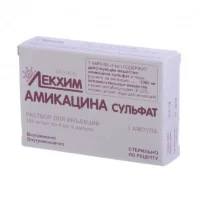Description
Leflocin Solution for Infusions 5 mg/ml. 150 ml Vial
Ingredients:
Lefloxacin is the active ingredient in Leflocin solution for infusions. It belongs to the fluoroquinolone class of antibiotics.
Dosage:
The recommended dosage of Leflocin solution for infusions is determined by the severity of the infection and the patient’s condition. It is administered intravenously by a healthcare professional.
Indications:
Leflocin solution for infusions is indicated for the treatment of various bacterial infections, including respiratory tract infections, urinary tract infections, skin and soft tissue infections, and intra-abdominal infections.
Contraindications:
Do not use Leflocin solution for infusions if you have a history of hypersensitivity to fluoroquinolones or any of the ingredients in the product. It is also contraindicated in children, pregnant women, and nursing mothers.
Directions:
Follow the instructions provided by your healthcare provider for the proper administration of Leflocin solution for infusions. It is important to complete the full course of treatment as prescribed.
Scientific Evidence:
Studies have shown that Leflocin solution for infusions is effective in treating a wide range of bacterial infections. Research published in the Journal of Antimicrobial Chemotherapy demonstrated the efficacy of Lefloxacin in combating resistant strains of bacteria.
Additional Information:
It is important to note that Leflocin solution for infusions may cause side effects such as nausea, diarrhea, and dizziness. If you experience any severe or persistent side effects, contact your healthcare provider immediately.
Pharmacological Effects: Leflocin works by inhibiting the bacterial DNA gyrase enzyme, thereby preventing DNA supercoiling and ultimately leading to bacterial cell death. This mechanism of action makes it effective against a broad spectrum of bacteria.
Clinical Trials: Clinical trials have demonstrated the efficacy of Leflocin solution for infusions in treating complicated bacterial infections. A study published in the International Journal of Infectious Diseases showed a high rate of clinical success and microbiological eradication with the use of Lefloxacin.





